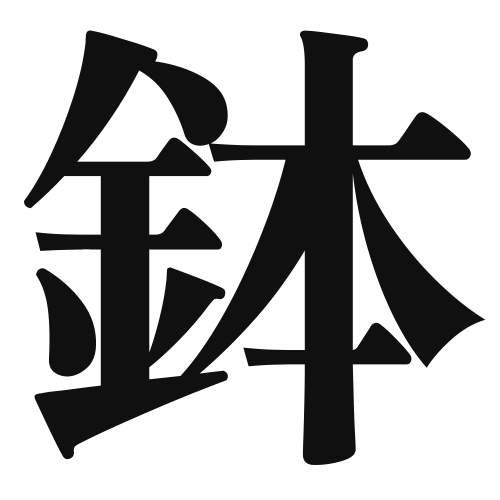1. Overview of Meaning
The kanji “鉢” (hachi) primarily means “bowl” or “pot.” It is often used to refer to a container, especially one used for plants or food.
2. Formation and Radical
Formation of the Kanji: The kanji “鉢” is a phono-semantic compound (形声文字), which combines the meaning component “金” (metal) and the phonetic component “八” (hachi). This suggests that the kanji is related to a metal bowl or pot.
Radical: The radical of “鉢” is “金” (kin), which relates to metal or gold, indicating that the kanji is associated with metal objects.
3. Examples of Usage
Common Words and Phrases: Some common words that include “鉢” are:
- 植木鉢 (うえきばち, uekibachi) – flowerpot
- 鉢植え (はちうえ, hachiue) – potted plant
Example Sentences in Daily Conversation:
- この鉢に花を植えましょう。 (このはちにはなをうえましょう。) – Let’s plant flowers in this pot.
- 鉢植えの植物は手入れが簡単です。 (はちうえのしょくぶつはていれがかんたんです。) – Potted plants are easy to care for.
4. Synonyms and Antonyms
Similar Kanji: A similar kanji is “皿” (sara), which means “plate.” While both refer to containers, “皿” is typically flat and used for serving food, whereas “鉢” is deeper and often used for plants.
Antonyms: An antonym could be “箱” (hako), meaning “box.” While “鉢” is a round container, “箱” refers to a rectangular or square container.
5. Cultural and Historical Background
Relation to Japanese Culture: In Japan, “鉢” is often associated with gardening and the art of bonsai, where plants are cultivated in small pots. It reflects the Japanese appreciation for nature and aesthetics.
Proverbs and Idioms: One common saying is “鉢の中の花” (はちのなかのはな, hachi no naka no hana), which means “a flower in a pot,” symbolizing beauty that is contained or limited, often used to describe someone with potential who is not fully realized.
